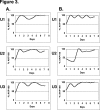The Escherichia coli BarA-UvrY two-component system is a virulence determinant in the urinary tract
- PMID: 16529647
- PMCID: PMC1421404
- DOI: 10.1186/1471-2180-6-27
The Escherichia coli BarA-UvrY two-component system is a virulence determinant in the urinary tract
Abstract
Background: The Salmonella enterica BarA-SirA, the Erwinia carotovora ExpS-ExpA, the Vibrio cholerae BarA-VarA and the Pseudomonas spp GacS-GacA all belong to the same orthologous family of two-component systems as the Escherichia coli BarA-UvrY. In the first four species it has been demonstrated that disruption of this two-component system leads to a clear reduction in virulence of the bacteria. Our aim was to determine if the Escherichia coli BarA-UvrY two-component system is connected with virulence using a monkey cystitis model.
Results: Cystitis was generated in Macaque fascularis monkeys by infecting the bladder with a 1:1 mixture of the uropathogenic Escherichia coli isolate DS17 and a derivative where the uvrY gene had been disrupted with a kanamycin resistance gene. Urine was collected through bladder punctuation at subsequent time intervals and the relative amount of uvrY mutant was determined. This showed that inactivation of the UvrY response regulator leads to a reduced fitness. In similar competitions in culture flasks with Luria Broth (LB) the uvrY mutant rather had a higher fitness than the wild type. When the competitions were done in flasks with human urine the uvrY mutant initially had a lower fitness. This was followed by a fluctuation in the level of mutant in the long-term culture, with a pattern that was specific for the individual urines that were tested. Addition of LB to the different urine competition cultures however clearly led to a consistently higher fitness of the uvrY mutant.
Conclusion: This paper demonstrates that the BarA-UvrY two-component system is a determinant for virulence in a monkey cystitis model. The observed competition profiles strengthen our previous hypothesis that disruption of the BarA-UvrY two-component system impairs the ability of the bacteria to switch between different carbon sources. The urine in the bladder contains several different carbon sources and its composition changes over time. Inability to efficiently switch between the carbon sources may thus provide an explanation to the reduced fitness of the uvrY mutant in the cystitis model.
Figures



References
Publication types
MeSH terms
Substances
LinkOut - more resources
Full Text Sources
Medical
Molecular Biology Databases
Miscellaneous

